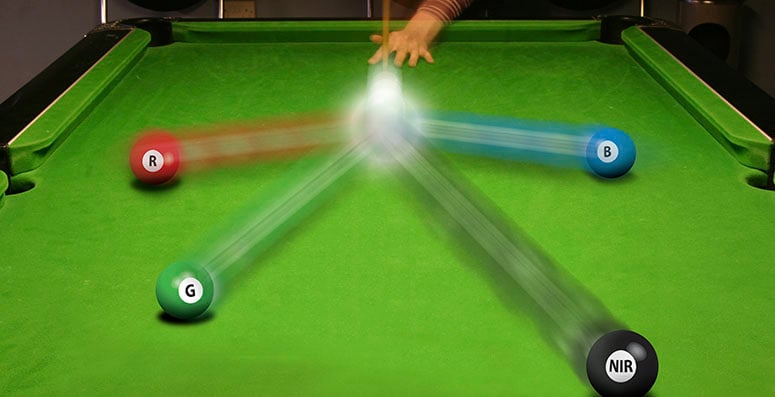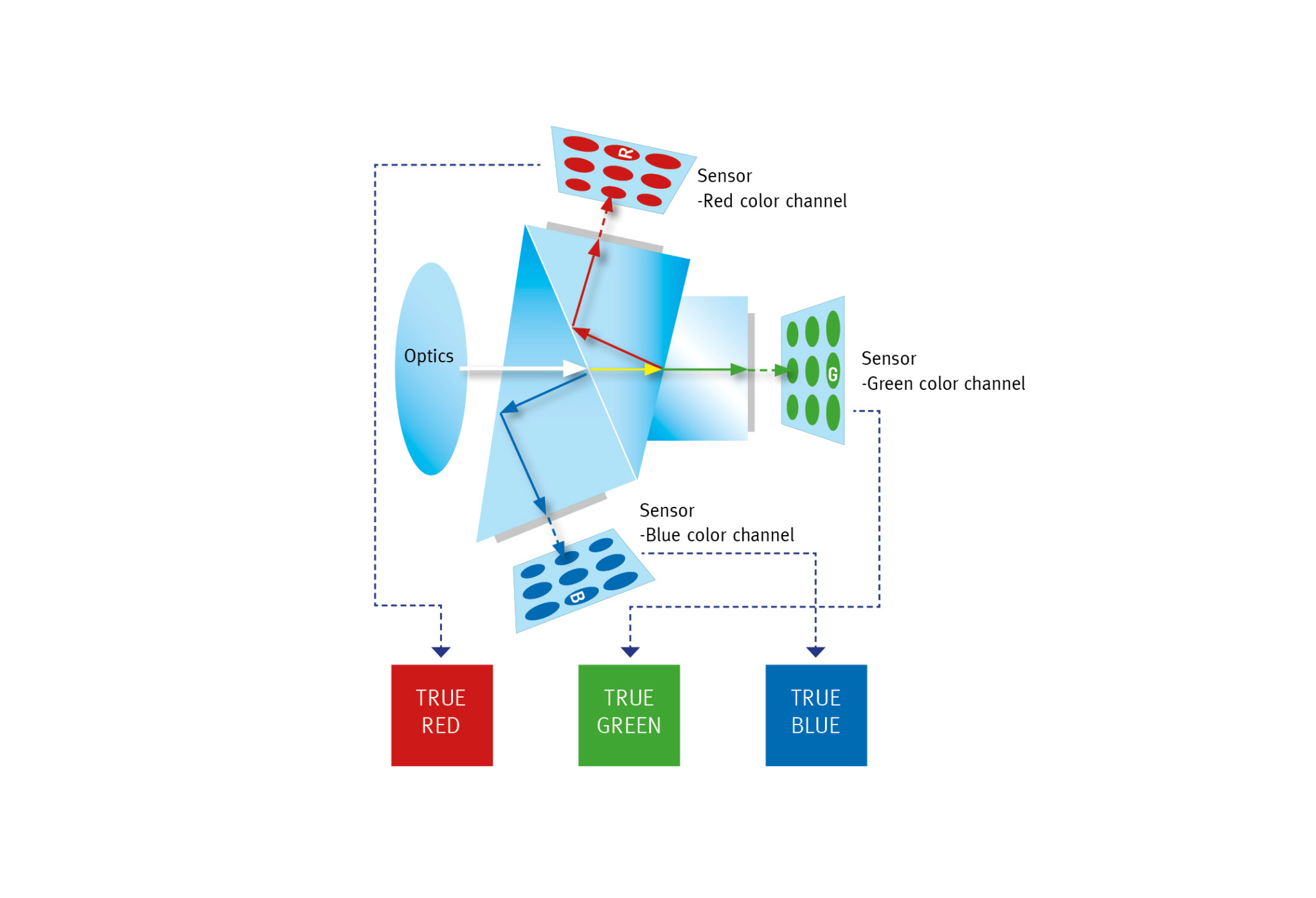
When you have decided an area scan camera is the best option for your machine vision application, you will need to choose between two options for color imaging: Bayer mosaic and prism-based, multi-sensor technology. How do you know which technology is the best choice for your situation? This blog explains when a multi-sensor prism color camera is the best choice.Compared to Bayer color cameras, multi-sensor prism cameras utilize high-quality prisms with dichroic filter coatings to split the incoming light to three separate imagers based on spectral wavelengths. The three precisely-aligned sensors provide an independent red, green and blue intensity value for each pixel in the image with no interpolation required.
In JAI’s prism-based RGB cameras the incoming light is separated into red, green and blue wavelengths, which are directed to three precisely-aligned image sensors. The JAI RGB color imaging technique provides better color accuracy and spatial precision than traditional color cameras usIng the Bayer mosaic technique.
In what situations is a multi-sensor prism color camera the best option?
- When you need the highest possible color accuracy: With three separate imagers, a prism camera provides an exact R, G, and B value for each pixel. No interpolation means the values delivered to your application are more accurate than those coming from Bayer cameras, which could be vital in color matching or distinguishing subtle shading variations
- When your application requires a camera with high sensitivity levels: Dichroic prism filters have higher light transmittance than Bayer filters to allow more of the incoming light to pass through. Furthermore, with three sensors, prism cameras capture virtually all of the light entering the camera, while Bayer cameras block two-thirds of the wavelengths striking each pixel. Since most pixels are represented by some combination of red, green, and blue information, a significant amount of the incoming light never reaches the sensor in a Bayer camera. This gives prism cameras the advantage when needing better contrast and differentiation, particularly in darker areas of an image.
Need help selecting the right color camera for your application?
Download our Tech Guide: Color Imaging, and walk through the steps of selecting the right color imaging camera for your application.
- When you want to detect and measure small details: Unlike the “softness” that blurs edges, printing, and details in a Bayer interpolated image, prism technology does not need to be interpolated, resulting in better spatial precision for applications that must read, measure, or otherwise analyze text or small image features.
- When you need accurate, vivid colors across the full spectral range: Like the human eye, cameras rely on splitting visible light into three separate spectral bands representing the longer (redish), medium (greenish), and shorter (bluish) wavelengths. Prism cameras are able to separate these three bands with very little overlap (referred to as color crosstalk). This keeps colors crisp and bright throughout the spectral range, compared to Bayer cameras whose filters have much greater overlap, resulting in colors that are more dull or muddy, especially for colors that fall somewhere between the three primary colors.
- When you require greater flexibility over some camera parameters: Many multi-sensor prism cameras allow users to control the settings on each sensor almost as if they were three separate cameras. This provides greater flexibility for white balancing, color enhancement, and other functions than is available with Bayer cameras.
Is an area scan the best choice for your application?
Need help selecting the right color imaging camera for your application? Read our Tech Guide: Color Imaging, and walk through several steps to select the right color imaging camera for your application.
